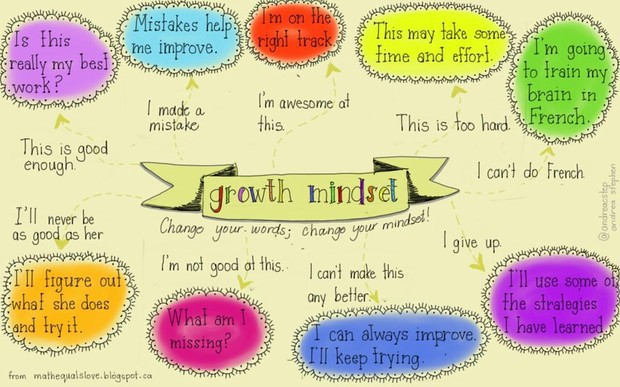
When I started my teaching degree, I came into the classroom with an idea of what my classroom would look like.
As a preservice teacher in Secondary education, majoring in computing science, in the classroom I imagined around 20 students who were in Grades 10–12, working on the screens of their computers. I was using a post-it note system where the students would put up a green sticky note if they had completed the task I had assigned to them or a red sticky note if they had a question or needed one-on-one help. As they progressed through this computers class, they would work on little projects of their choosing that relate to the curriculum. For example, in a database class, some of them might work in teams to design an airline booking system while others might want to set up an online library. I imagined them having fun and being engaged with the possibilities they saw in computing science with me serving as their guide.
Looking back at this classroom scenario now, I realize it was very much a satellite view of things — a high level view of the classroom which comes to mind when you know little about your students. During my school years in India, I never interacted with students with disabilities or did not realize some might have belonged to gender minority groups and as a result my satellite view that I came into the teaching program with, did not have a number of details that I learned about as I progressed through the classes. The education courses that I have taken in Fall 2017 challenged this view of the classroom that I had as well as opened up new doors for me which I did not realize even existed.
I learned about who I am as a teacher. I can say now that my classroom vision puts me in the existentialism philosophy where the students follow their interests within the curriculum. It is also a constructivist environment because they learn by doing and building, they are in a safe environment where they can make mistakes, figure out what they like, ask for help and know that they will be supported. It is good to give words to the philosophy and psychology I will practice, at least in my computers class.
One of biggest eye openers for me that drastically challenged this vision of the classroom was realizing that the teaching certificate that I will get at the end of these two years does not mean I will end up teaching in junior high or high school in a computers or math class. I can be assigned any grade and subject by my principal and though I could refuse to teach it, I would be better off learning on the job. My classroom vision now has changed into a number of possibilities that I had not thought of before — I could be working with Grade 3 students on language arts, I could be with Grade 6 students, teaching them science, I could even be with Grade 8 or 9, in a combined computers class,… and as I imagine the earlier grades, the importance of knowing about special needs children, their identification becomes very important, to be able to give them the right supports at the right time and help them succeed in education as well as life.
I used to think for some unknown reason that special needs kids are not as present in higher grades. Maybe I thought they had their own classroom but according to the Teaching Quality Standards in Alberta, it is a teachers job to create an inclusive environment in the classroom and though that does not limit the inclusion to special needs students, it means that there very well could be some of these students in my classroom.
While volunteering in a Grade 8 class, I met two students — one was on the autism spectrum and the other had a learning disability. I observed my mentor teacher and I even tried to work with one of them during the math class. I encountered this resistance from his side that I think about to even today, weeks later. Maybe I did not know the student long enough to have developed a relationship of help-giving with him, maybe this is just the way he is. I have been pondering on this problem and I am looking for solutions on what I would do differently in approaching him next time.
My interaction with the two students got me interested in Learning Disabilities and what I can do as a teacher to help these students. I attended a workshop about it. I also started researching. This is the life of a reflective teacher. To think about the perceptions and beliefs I bring to classroom, to review them when they get challenged and change them.
Part of being a professional is to continuously growth and I have started this journey of growth and being a life-long learner. Reflecting consistently through my courses (partly because it was required) got me in touch with the writer and researcher in me again. I suddenly had so many questions about classroom management and building a toolbox of strategies I can fall back on for all the grades I could possibly teach that I decided to make this the beginning of my journey as a reflective teacher.
I learned about multiple intelligence from one of my fellow preservice teachers and did a quick test of the way I learn best. It’s through linguistics and being interpersonal. I thought about how I could learn more about the classroom, share my ideas and get feedback on them from other teachers. I decided to write and share my views online (A Teacher’s Hat), joined some teacher groups on Facebook and since, I have gotten some encouragement from them (teachers around the world) and observed their questions and learned from their discussions. There is a huge culture of helping out and the fact that we can count on fellow teachers is an amazing feeling. I might be alone in the classroom when I am teaching, but I am backed by my profession and I have the back of my profession.

I have a better vision of my classroom now. I imagine it having elements of First Nations culture, their important symbols and I hope to read up more on how they teach so that I can incorporate some of their practices while teaching and in this way, cater to the needs of my First Nations, Metis and Inuit (FNMI) students. I did not know about them beforeI started this degree and the hardship that they have gone through and I will do my best to look at things form their perspective. I remember while teaching as a Teaching Assistant two years ago, I used story telling in my first class to give the students context of the assignment we were going to do. I have learned that First Nations are an oral culture and, hence, story telling would be a great way to relate to my student.
I also want to have a rainbow flag in my classroom to show support to the minority gender and sexual identity students and make them feel welcome. I hope I can find a poster for the class that says something like “correct me if I am wrong” that applies not just to the students but also myself.
I want to have a small section of the room as a quiet centre where students who are struggling a lot, cannot concentrate or need some time to think things over can go and sit to calm down.
I want to incorporate restorative justice in my class as well and maybe this quiet section of the room would be a good place for such conversations. I love journalling and if any of my habits can help my students, I plan to show that to them, whether they ultimately decide to adopt them or not. I have found posters of mental health and sleep that the youth will need in particular.
I exercise an influence on my students and they in turn will exercise influence on me. I will try strategies to help them and sometimes it will help them and other times it will not. I don’t want to give up when it does not work out. I want my students to have a growth mindset but that is not possible without me developing a growth mindset myself.

There is a voice in my head that is doubtful at times that I will have difficulty finding a job irrespective of all the credentials that I have because I will be on a work permit and am not Canadian, though my aim is to be a citizen. My family and peers believe that I will but believing is not the same as taking action. I decided that I will do something to calm that panicky voice down — to show that I am trying my hardest and if I continue trying to be part of communities, learn from experienced teachers, read and collect all my strategies, interact with my preservice peers, I am taking all the right steps towards success. I will get there in time.
In the last few months, I have reflected on a number of things and I will continue this journey of reflection. I have decided to be proactive in looking for new ways of teaching, classroom management and one of the best ways to learn is by observation. I plan to volunteer with children organizations and watch teachers teach and help wherever I can. I understand that there is a lot to learn and though I have a lot more time right now than I will when I become a teacher, that is the beauty of being a reflective teacher — they is always something new to learn. As technology becomes more integral part of the classroom, there will be new ways of teaching to learn and as a teacher who wants her students to succeed, I will have to keep up with all of it.
I have never felt so empowered before and passionate about doing something and this is the drive that will take me forward. Like growth mindset’s take on intelligence, my classroom will be a malleable setting — it will change every year for sure, but with the students and the challenges that they might face within specific topics, my teaching techniques will change to cater to them. In conclusion, I cannot have one vision of my classroom. There are many perspectives and view points that I need to look at it from — from the top, from the door (what the students sees when they walk in), from the windows (is it welcoming from outside?), from the corners (where are some things set up such that students can access them? My mentor teacher has a drawer of loose sheets) and from within (what am I doing to facilitate my students’ growth and learning?). Some of the elements will remain the same but others will change.
If you would like to share your story of reflecting on teaching or have classroom strategies that would like to share, please consider writing for A Teacher’s Hat. You may contact me on Twitter. Looking forward to hearing from you! 🙂

Be First to Comment